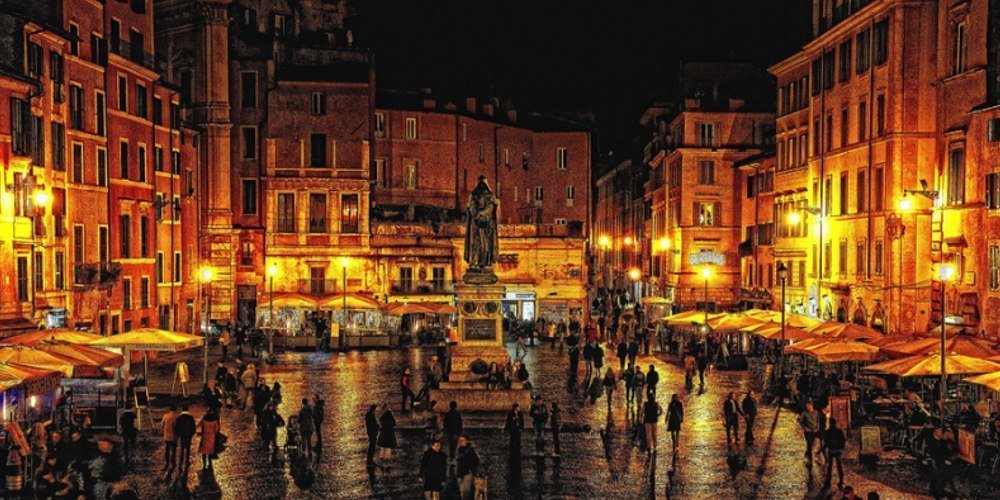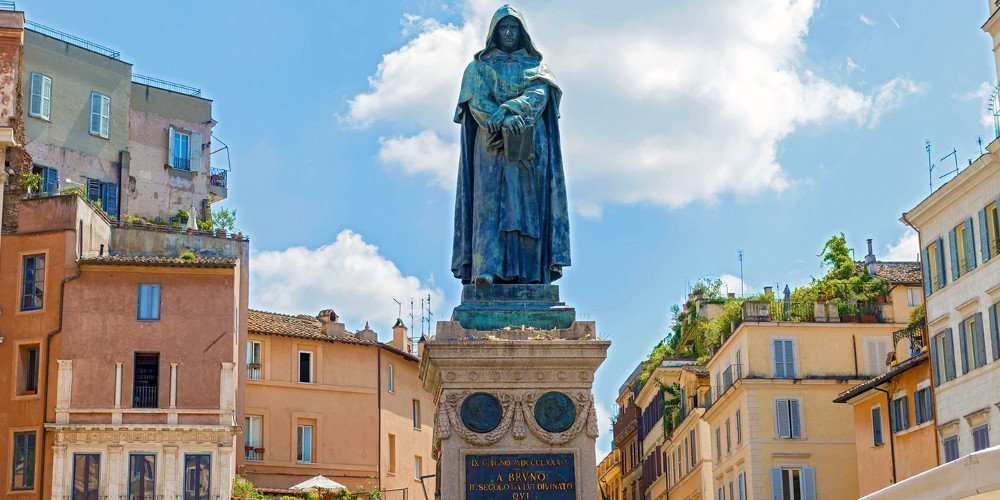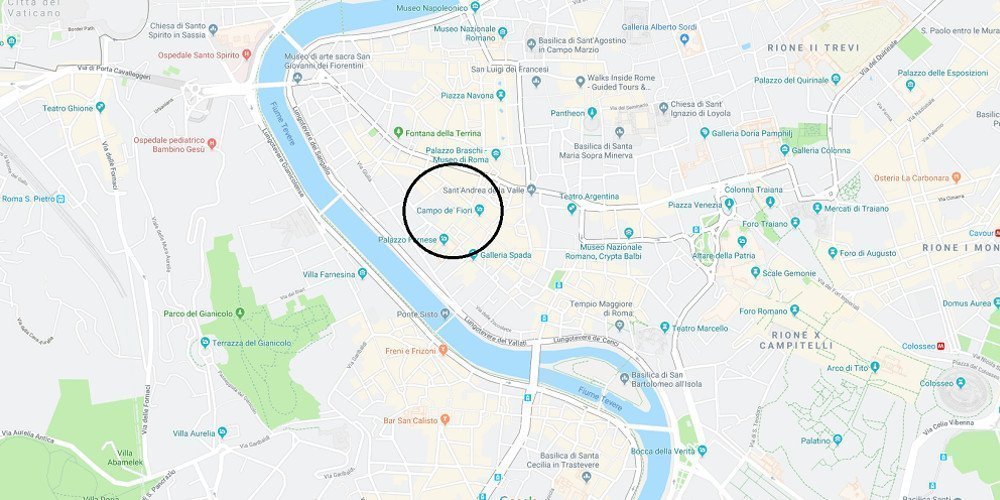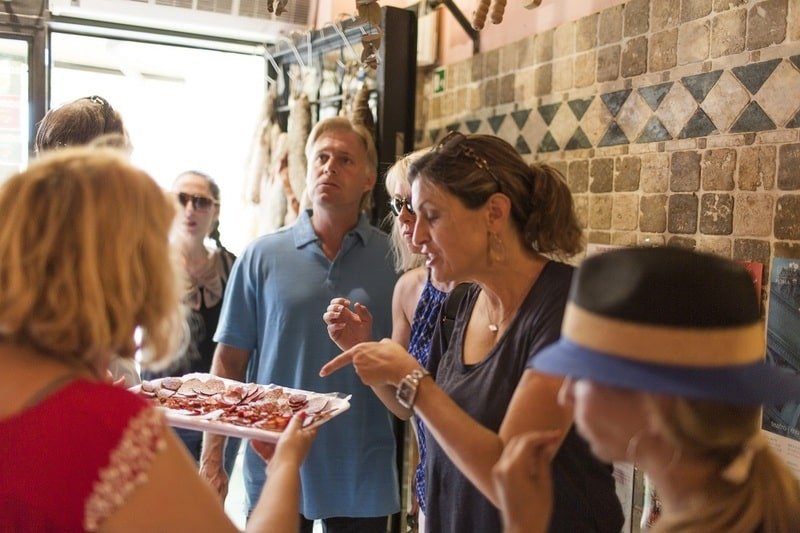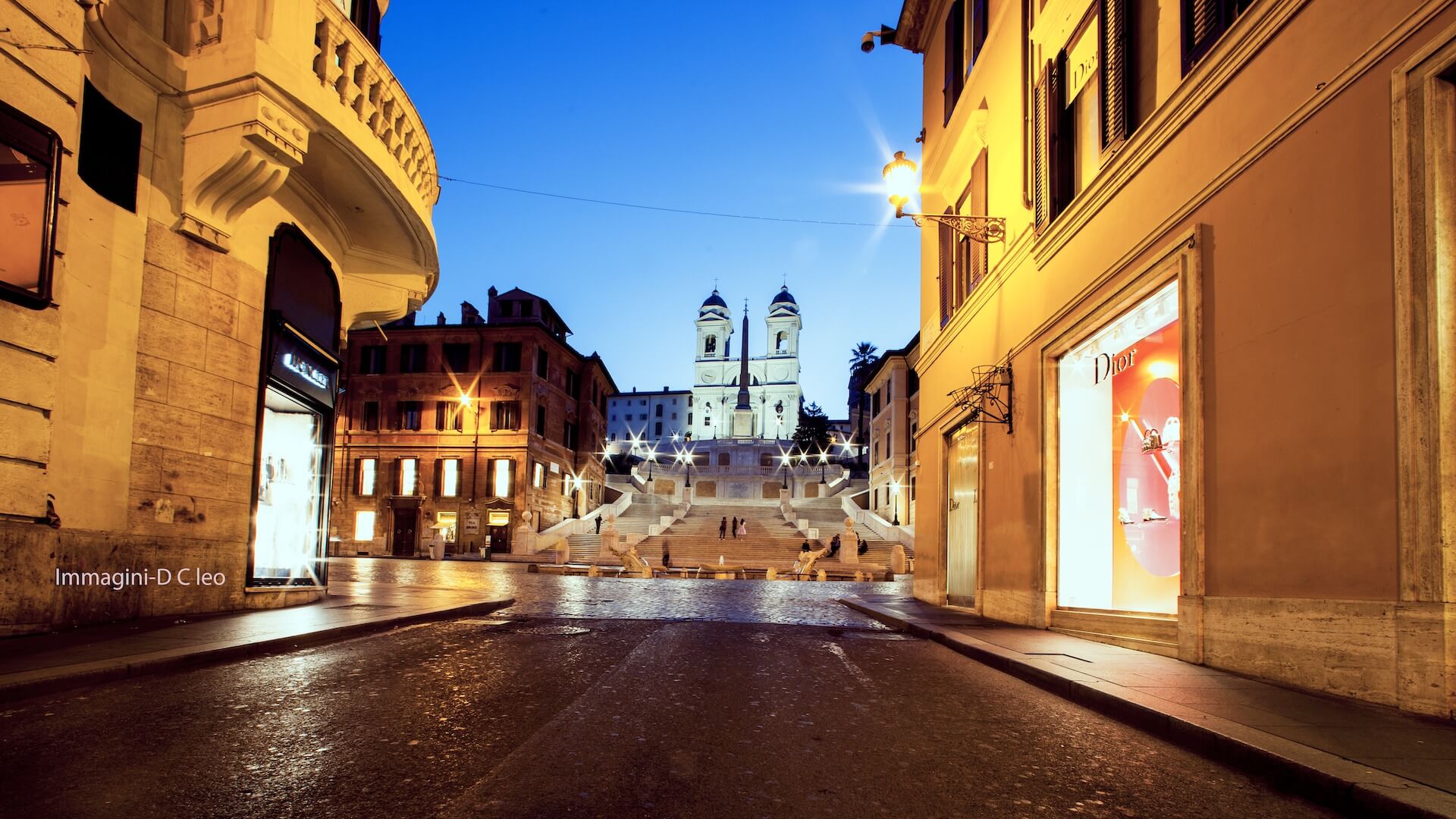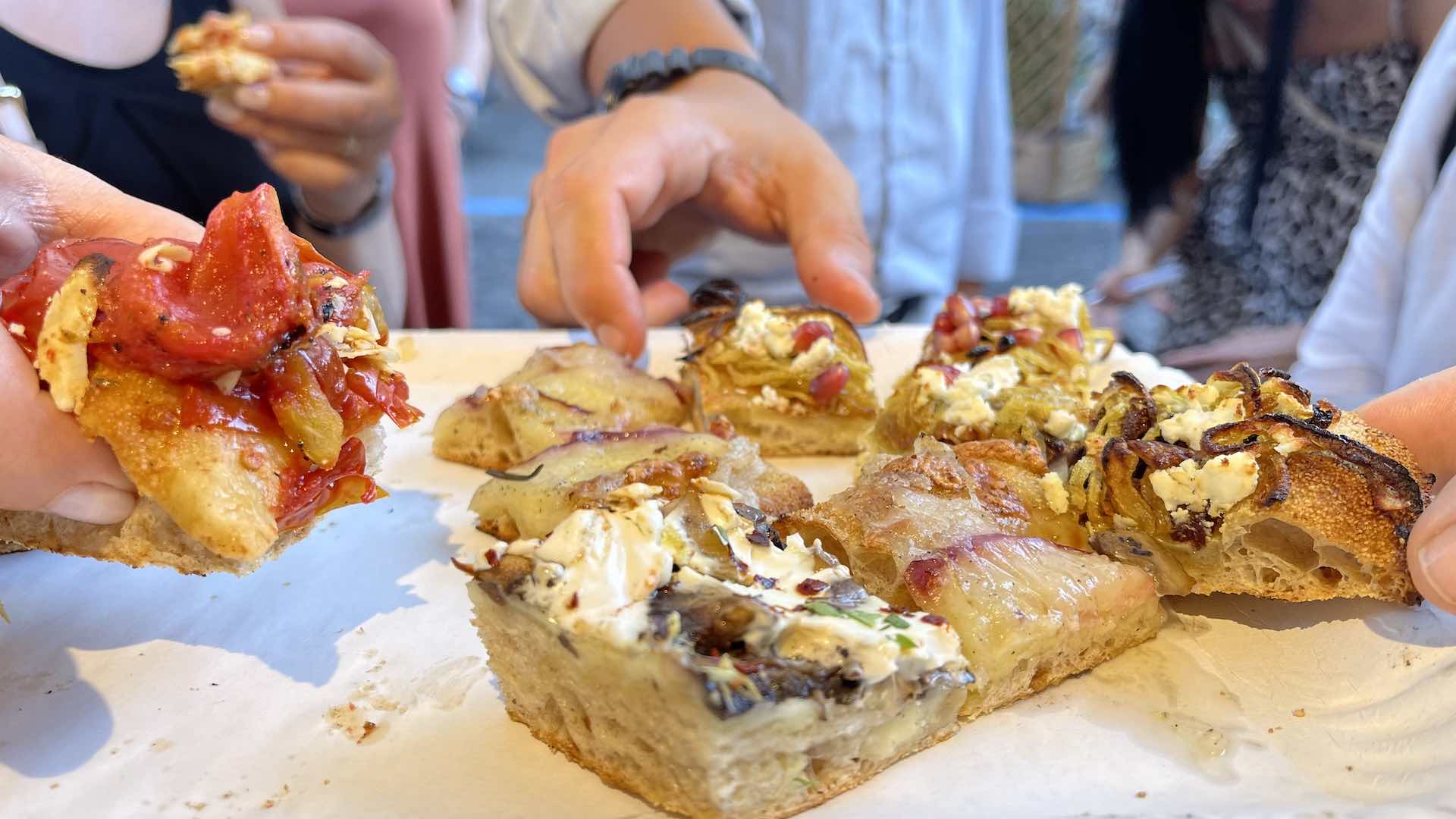Campo de’ Fiori is one of Rome’s most beloved squares. During the daytime it’s bustling with a daily farmers’ market that takes place here every morning from Monday to Saturday. After twilight, Campo de’ Fiori becomes one of the trendiest meeting places in Rome thanks to its huge variety of restaurants, cocktail bars, and terraces.
The rectangular piazza of Campo de’ Fiori is nestled between the high renaissance structures of Michelangelo to the south (Piazza Farnese) and the Baroque masterpieces of Bernini and Borromini to the north (Piazza Navona).
What the Italians call La Dolce Vita (“the sweet life”) can best be felt in Campo de’ Fiori around sunset. But its cool, convivial atmosphere masks a dark and turpid history. For this square was once one of the main landmarks in Rome where you really didn’t want to end up.
History
The 'Monk Statue' of Giordano Bruno
In the center of Campo de' Fiori stands the statue of Giordano Bruno, a Dominican friar, philosopher and mathematicians. Bruno was burned alive here in 1600 after the Catholic Church accused him of heresy for advocating similar cosmological arguments to those put forward by Galileo.
Immortalized in stone, his dark and brooding figure embodies all the historic martyrs who were executed on this site for daring to defy the church. The statue's positioning is significant: not only does it stand on the exact site of his execution, but Bruno's bronze figure has stood facing the Vatican since the date of its dedication in 1889.
Soaring above the blossoming market, Bruno's statue stands as a stark and powerful reminder of Campo de' Fiori's morbid history. No churches were built here until the 15th century, nor was it until this period that the square was even paved. And so as unused space between the Largo di Torre Argentina and the often flooding Tiber, Campo de' Fiori served as the scene of public executions.

Campo de' Fiori's Surrounding Streets
Surrounding Campo de’ Fiori are medieval streets lined with artisan shops radiating out in nine directions. Many of these streets take their names after the type of trade or craft practiced there. We have the Via dei Balestrari for the crossbow-makers, the Via dei Cappellari for the hat-makers, the Via dei Baullari for those who made the aristocracy's coffersm and the Via dei Giubbonari for the much continued trade of tailoring.Campo de' Fiori's Fountain
The Campo de' Fiori is also the site of an ancient cattle fountain known as la terrina (i.e. "soup bowl"). La terrina is filled daily with freshly cut flowers, a homage to its name and use in ancient Roman days.
The fountain bares an old inscription, reading: Fa del ben e lassa dir - "Do good and let them talk". This still seems entirely appropriate, given the exchange and gossipy nature of the marketplace.
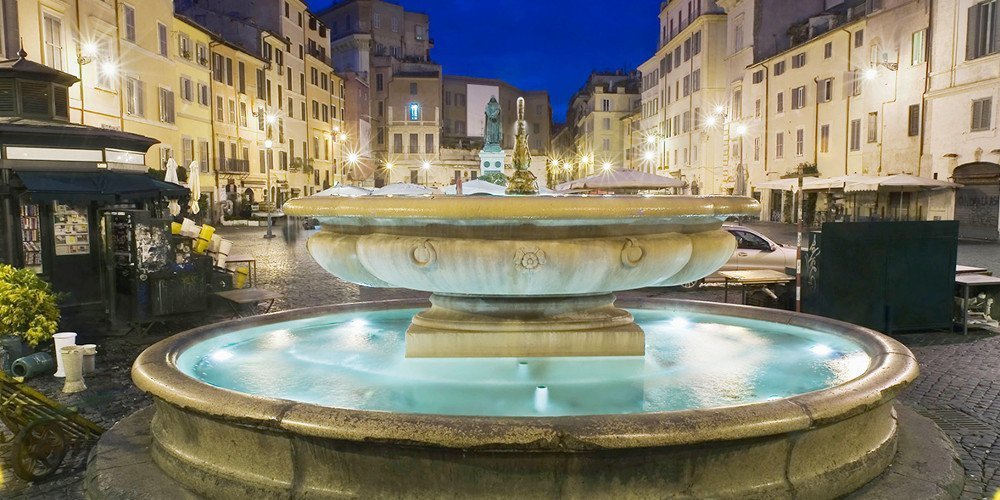
Useful Info
FAQs
How to get to Campo de' Fiori
Campo de' Fiori is about as centrally situated as it gets (not all that surprising given it was a place of public execution and so had to be easily accessible for all).
It's just a five-minute walk from most of Rome's main monuments (the Pantheon, Piazza Navona and Teatro di Torre Argentina) and a 10-minute walk from neighborhoods like Trastevere and the Vatican City.

